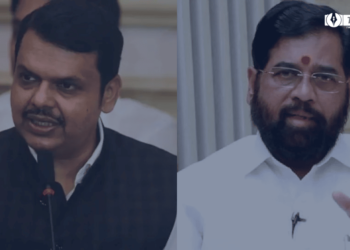[ad_1]
Since its Independence in 1947, India has maintained itself as a secular state, despite its sprawling diversity and communal differences. While our differences have proved to be hurdles to secularism since pre-Independence times, with Muslims and Dalits demanding separate electorates, two partitions, communal violence and strife, and amendments and sections of the constitution devoted to specific faiths and castes, for the most part, our Nation has maintained its status of a secular, sovereign, democratic republic.

The word ‘secularism’ in a broad sense means governance-based with impartial consideration or support of any one particular religion. While this doesn’t mean that the state is adversarial with religious affairs, it also doesn’t mean that it is supportive of it either. A secular society is tolerant of religion and actively fosters it. However, in stark contrast to this, we see the phenomenon of Ultra-secularism, which is not only adversarial with religion, but works to actively diminish its presence.
As Indians we have the freedom to practice, preach and propagate our faiths, however in today’s political climate we may as well be heading towards a grim Orwellian future where it may not be so.
The Poison of Ultra-secularism: a Historical Account
To understand Ultra-secularism, we have to journey back in history to the time of the Nazis, who, in one of the first Nations to embrace irreligion as the national faith, showed us the extent to which human evil can go.

While secularism existed way long before Nazism, with the French revolution in the eighteenth century, ultra-secularism came with the rise of the modern atheist nation.
It all began with Frederick Nietzsche’s philosophy of nihilism and the übermensch, which preceded the dark days of National Socialism and the Holocaust. According to Nietzsche, the man had reached a point in time when he had exhausted his need for divinity and God was in a sense “dead” as a concept. This provided a void for morality that needed to be filled with that of the übermensch or the ‘superman’, a model that all human beings should aspire to reach but one which can only be attained with the acceptance of the idea that there is no God.
However, the German population interpreted it to mean a goal whose ends justified the means and threw in anti-semitism and inhuman racial politics into the mix.
In the twentieth century, when the Nazis came to power, Germany saw an erosion of religious and moral ideas alike, and during the Holocaust, with the extermination of millions of Jews, gypsies, and disabled people, the übermensch became the ultimate goal to be achieved through racial hygiene and propagation of the Aryan race. This was one of the first and most horrific examples of Ultra-secularism in history and it left an indelible mark on the history of Germany as a nation.
Meanwhile in Turkey, the Muslim Ottoman Empire was coming to a collapse. The Khilafat movement in India not being able to withstand the British imposed an end to the so-called ‘Caliphate’, the rulership shifted from the hands of the Muslim ruler to an Ultra-secular dictator Mustafa Kemal Ataturk whose legacy, despite his tyrannical rule is celebrated in Turkey to this day. Ataturk was himself a Muslim but had a somewhat unnervingly extreme belief in the idea of secularism. During his reign, mosques were turned into museums, the Turkish script was changed from Arabic to Roman, attires, and fashion saw transition and it was even proposed that the call to prayer be done in Turkish and Hijabs be banned.

While this Ultra-secularism paved way for religious tolerance and even acceptance between different communities as well as translation of the Qur’an into Turkish, it was one of the less pretty examples of secularism gone to its extreme ends.
While secularism separates itself from religion and irreligion alike, one could argue that the rise of the communist state in the Soviet Union was one of the major examples of Ultra-secularism in history, one whose legacy was carried forward by the People’s Republic of China as well. Whereas the USSR dissolved into a quasi-democratic state by the end of the twentieth century, China went ahead to sinicize its population – one of the major examples of which can be seen in the ethnically targeted reconditioning of the Uyghur Muslim community today.
Yet another example of Ultra-secularism can be seen in our neighboring country of Bangladesh, whose ruler Sheikh Haseena has put an end to tolerance of any religion to the extent that it is difficult for Muslims – who are the majority religion in the country – to practice their faith and implement their laws under the present government.
Conclusion
Looking at all the above examples shows that our communal disharmony aside, India stands in a pretty good place right now. However, we are being ruled by a party that has had links with the Nazi-inspired RSS, and they are pushing for something called the Uniform Civil Code, which if comes to see the light of the day will be a good example of modern-day Ultra-secularism and will cause the minority as well as the majority alike to be repressed.
In the meantime, we can prevent this by protecting and strengthening our ties of brotherhood between all the faiths in the country and unite against our common enemies of corruption, poverty, hunger, and injustice.
Also read :
[ad_2]
Source link










